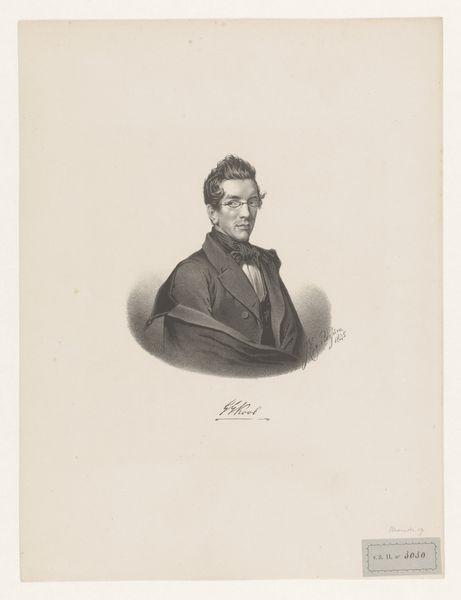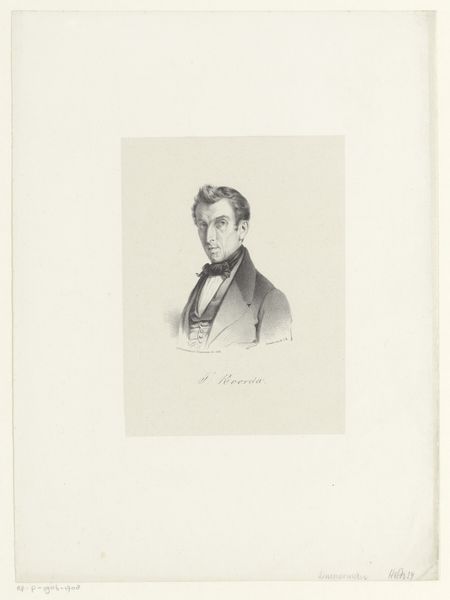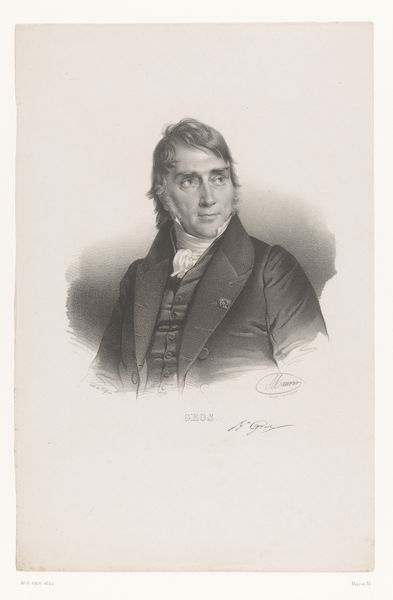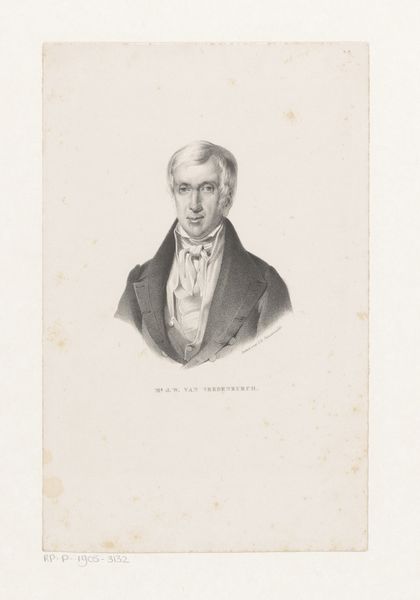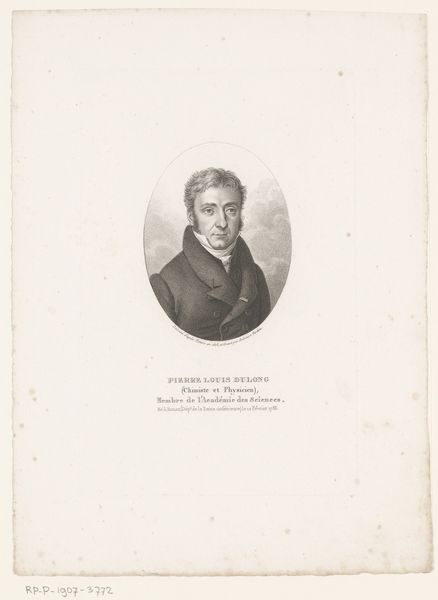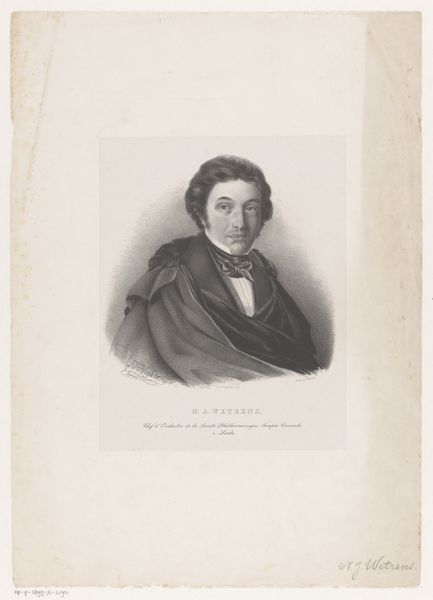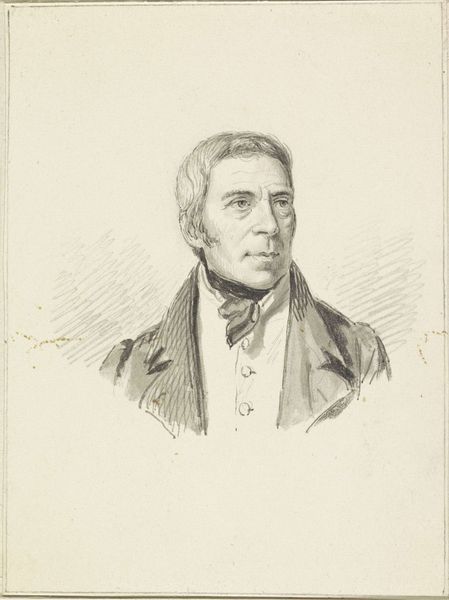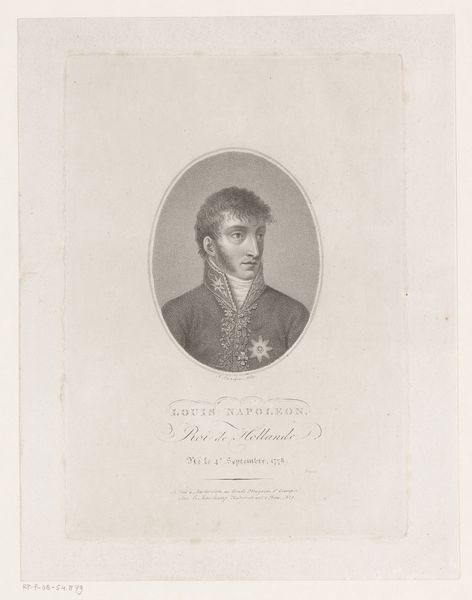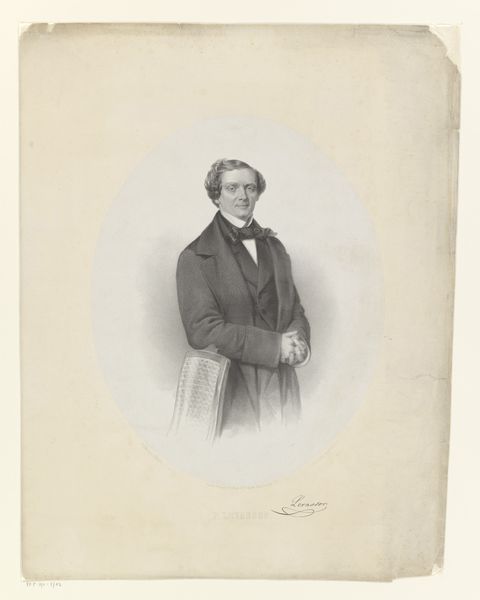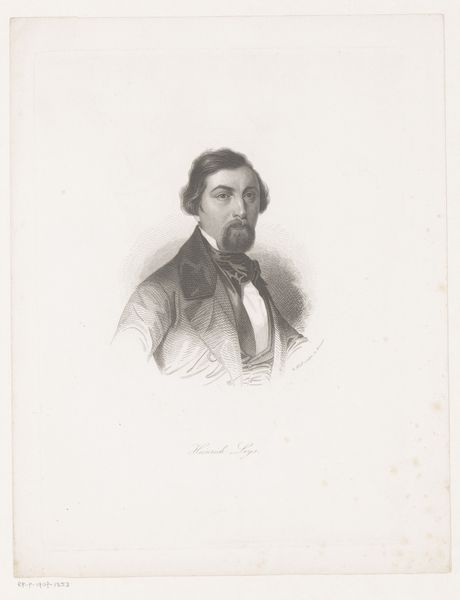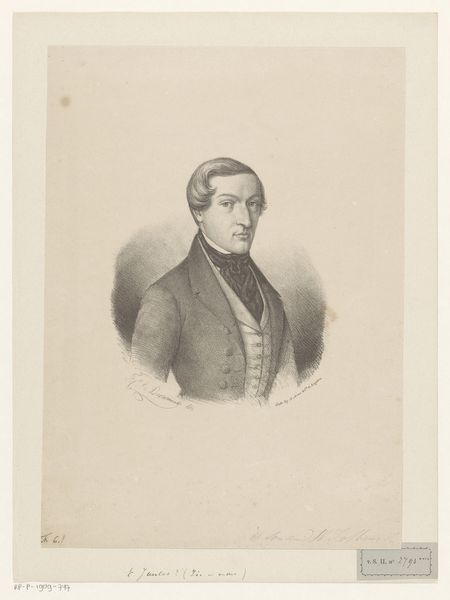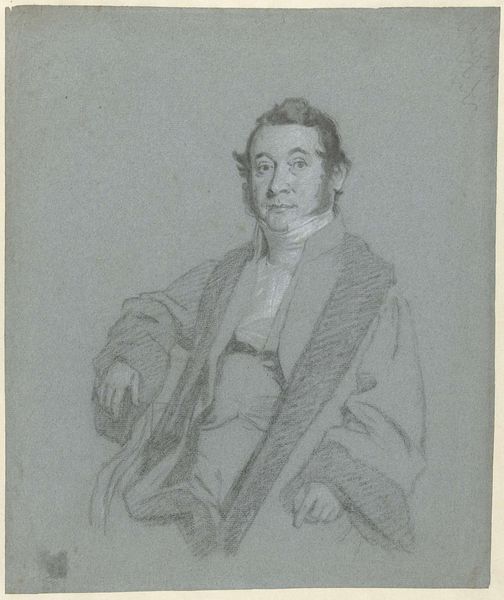
drawing, graphite
#
portrait
#
drawing
#
pencil sketch
#
charcoal drawing
#
pencil drawing
#
romanticism
#
graphite
#
portrait drawing
Dimensions: height 223 mm, width 150 mm
Copyright: Rijks Museum: Open Domain
Editor: This is a portrait drawing of August Wilhelm von Schlegel, dating from 1812 to 1868, by Carl Mayer, currently at the Rijksmuseum. The delicate graphite lines really capture the weight of his coat and decoration, creating a formal but intriguing composition. What can you tell me about this piece? Curator: The drawing presents Schlegel, a prominent intellectual figure, within the burgeoning public sphere of the early 19th century. Consider the rise of Romanticism and its emphasis on individual genius. How do portraits like this contribute to constructing a public image and celebrating individual intellectual achievement, particularly given Schlegel’s literary criticism and contributions to Romantic thought? Editor: It's interesting you say that. To me, the stern look in the drawing makes him appear unapproachable and distant. It almost undermines the Romantic ideal of emotion. Curator: Indeed, and that's part of the tension in representing figures of authority. While Romanticism values individual expression, portraiture, especially official portraiture like this could reinforce social hierarchies. The setting – the Rijksmuseum itself – impacts how we perceive this piece now. Do you think it has shifted since when it was originally made? Editor: Absolutely! In a museum, it’s presented as art, disconnected from the specific political circumstances it might have reflected at the time. But understanding those circumstances is so important. Curator: Precisely. Museums shape meaning. By placing this drawing in its collection, the Rijksmuseum asserts Schlegel’s cultural significance but also controls its interpretation. Considering who is remembered, and how they are remembered, is crucial when examining these types of artworks. Editor: I never thought about that framing aspect before; now I will consider it more closely! Thanks for the lesson! Curator: It’s all about questioning the narrative! Examining artworks like these critically helps us unpack the power dynamics inherent in visual representation and museum practices.
Comments
No comments
Be the first to comment and join the conversation on the ultimate creative platform.
